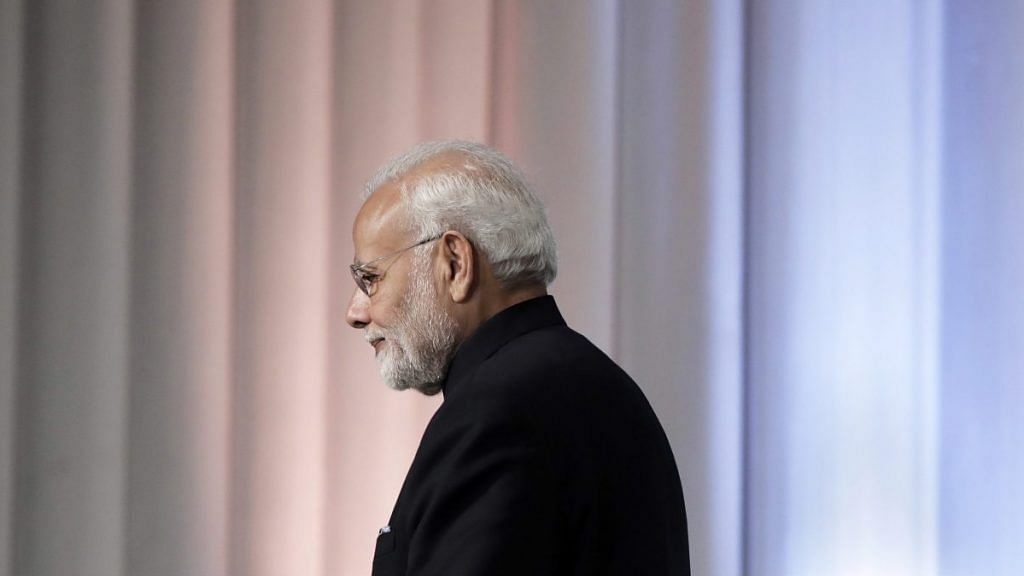Neither Ram nor Rafale, the biggest election issue is rural distress.
December has developed the habit of giving us a reality check. By New Year’s eve, we forget it, only to get a rude shock once again next December.
Last December, the Gujarat assembly election brought to national attention the suffering of rural India. Despite GST and Patel sentiments, urban Gujarat stood by the BJP, but rural saw a complete rout.
While the national media worries about Ram and Rafale, CBI and RBI, Modi and Rahul, the biggest story of India is rural distress. We may again get a reminder about rural India’s woes on 11 December. Not just in the BJP-ruled states of Rajasthan, Madhya Pradesh and Chhattisgarh but also in the prosperous TRS-ruled Telangana, the story of this election is rural distress.
Also read: Narendra Modi, it is time for you to listen to the farmers’ mann ki baat
Regardless of who wins or loses these states, it will be important to note how rural seats have voted. If there is a clear urban-rural divide in the results on 11 December, it will impact Narendra Modi’s prospects in 2019.
So far, the BJP voters are distinguishing between Brand Modi and the Bharatiya Janata Party, between the Prime Minister and the chief minister. There is not a single BJP-ruled state where it could be said that the chief minister is more popular than the Prime Minister – not even ‘mama’ Shivraj in Madhya Pradesh.
If 11 December brings the portents of a broken Gaon connection, it will put a serious question mark on Modi’s 2019 re-election prospects.
Despite the warning given by rural Gujarat, the BJP governments at the Centre and in states haven’t been able to reassure the rural Indian about the country’s economic path. While the blame for this may be going to state governments for now, there’s a good chance people may start asking this question of Narendra Modi as December leads to May.
Consider the numbers
While both urban and rural India are staring at an economic slowdown, the problem is acute in rural areas.
Rural wage growth is at its lowest in three years. Once adjusted for inflation, the real wage growth is currently in negative — in other words, rural Indians effectively have less purchasing power than they used to. Real rural wage growth is in fact at a ten year low.
Just when rural incomes were showing an uptick in 2016, the Modi government announced demonetisation, and some months later GST, both of which hurt rural wage growth badly.
The best indicator of rural Indians feeling a pinch in their pockets is low inflation, reflecting a lack of growth in purchasing power. And inflation’s been falling faster in rural than urban India. While a rise in fuel prices has spiked inflation, food prices continue to be deflationary.
Food inflation has been particularly low, reflecting low minimum support prices (MSPs), and even now that those have been increased, the procurement of foodgrains produced by farmers has been low. It is not surprising that the support for the BJP in rural India has been declining slowly but steadily in surveys. Low food inflation is keeping the urban poor happy – at the cost of the farmer’s pocket. Low international commodity prices haven’t helped food exports either.
Also read: Despite India’s economic growth, the moment for China-like job creation may be lost
Except for paddy and cotton, the announcement of MSPs worth 1.5 times the production cost is a promise on paper alone. The gap in Kharif prices is up to 43 per cent. Experiments to fill the gap between promised and actual market prices haven’t borne fruit.
Despite an overall normal monsoon, 200 of India’s 640 districts are facing drought. These include parts of Rajasthan and Madhya Pradesh.
History repeats itself
While all the stars are coming together against the agricultural economy, the rural India doesn’t have factory jobs to escape to. Make in India has remained a pipe dream. The Modi government has de-valued NREGA, making life harder for the landless labourer too.
We have seen this movie before. Modinomics is a lot like Vajpayeenomics. By 2004, agricultural growth and real rural wages were depressed. The government chose to focus on big infrastructure rather than farm incomes. We know how that worked out.
Also read: Haridwar to Delhi: On route to protest, farmers slept on road, cooked in makeshift kitchens
Last December, the BJP won the Gujarat assembly election despite being routed from rural seats because nearly 43 per cent of Gujarat’s population lives in urban areas (Census 2011). In Madhya Pradesh, it’s only 28 per cent, in Rajasthan 25 per cent, and in Chhattisgarh 23 per cent. Should the rural parts of these states reject the BJP as unequivocally as they did in Gujarat last December, the BJP would lose all these three states. (K.C.R. Rao may have some relief in this regard because nearly 40 per cent of his state is urban.)
Can Brand Modi convince the rural Indian to show more patience until 2022? We’ll know on 11 December.
